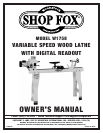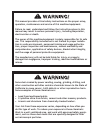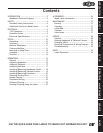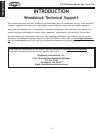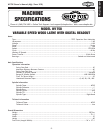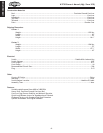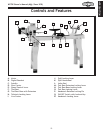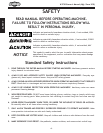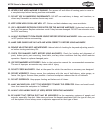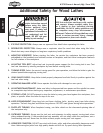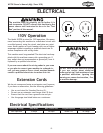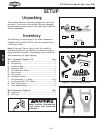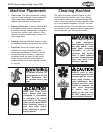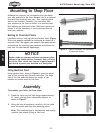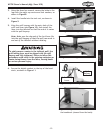
-7-
W1758 Owner's Manual (Mfg. Since 3/10)
Turn power off and allow all moving parts to come to
a complete stop before leaving machine unattended.
DO NOT use machinery in damp, wet locations, or
where any flammable or noxious fumes may exist.
. Clutter and dark shadows may cause accidents.
Undersized cords over-
heat and lose power. Replace extension cords if they become damaged. DO NOT use extension cords
for 220V machinery.
1 . Make sure switch is
in OFF position before reconnecting.
. Make a habit of checking for keys and adjusting wrench-
es before turning machinery ON.
Check for binding and alignment of
parts, broken parts, part mounting, loose bolts, and any other conditions that may affect machine
operation. Repair or replace damaged parts.
. Refer to the instruction manual for recommended accessories.
The use of improper accessories may cause risk of injury.
. Work at the speed for which the machine or accessory was designed.
. Always secure the workpiece with the use of hold-downs, miter gauge, or
fence. Use jigs or fixtures when possible. A secured workpiece reduces the risk of kickback.
. Keep proper footing and balance at all times.
. Know and avoid condi-
tions that cause the workpiece to "kickback."
to the respiratory systems of people and
animals, especially fine dust. Make sure you know the hazards associated with the type of dust you
will be exposed to and always wear a respirator approved for that type of dust.



